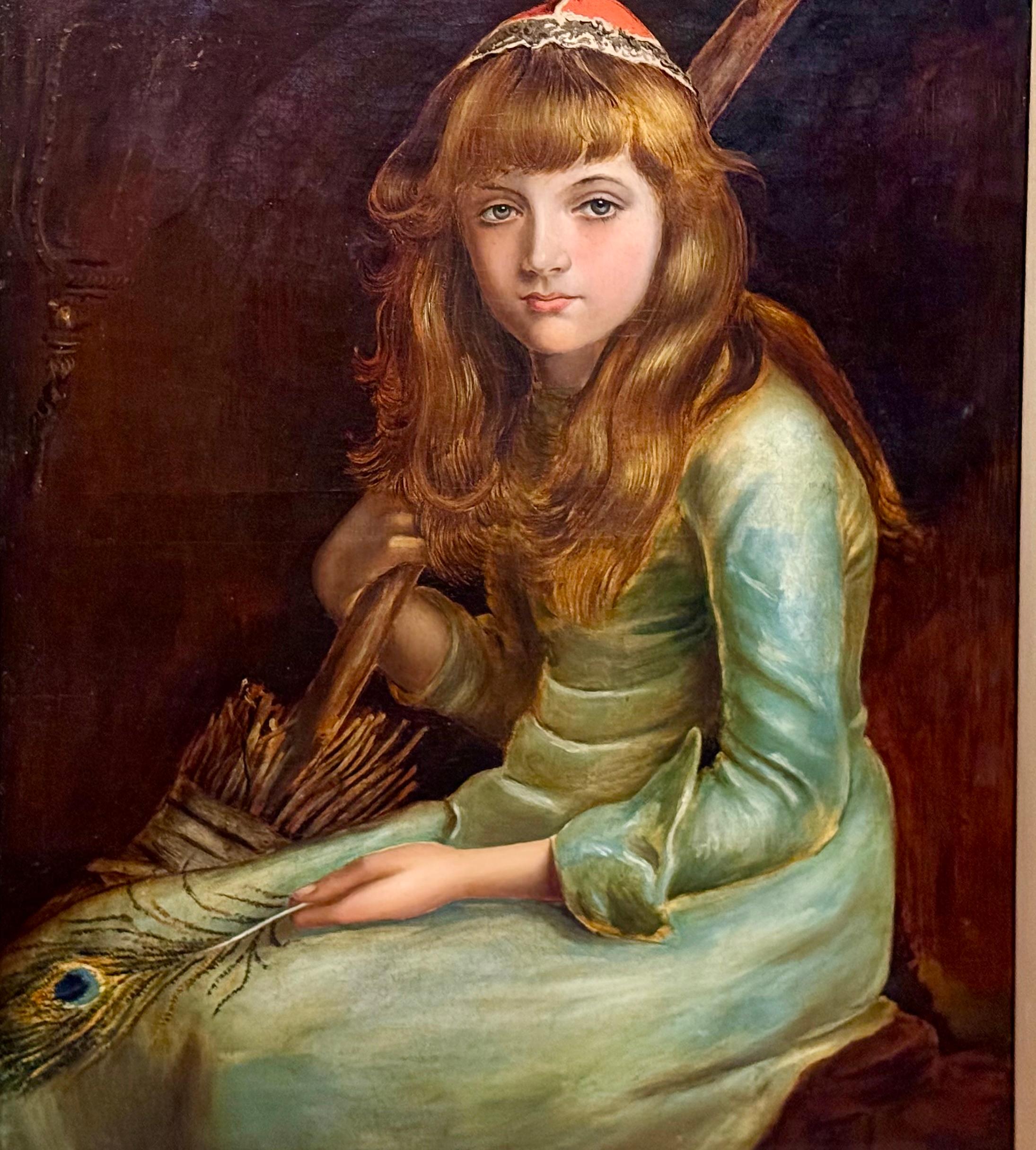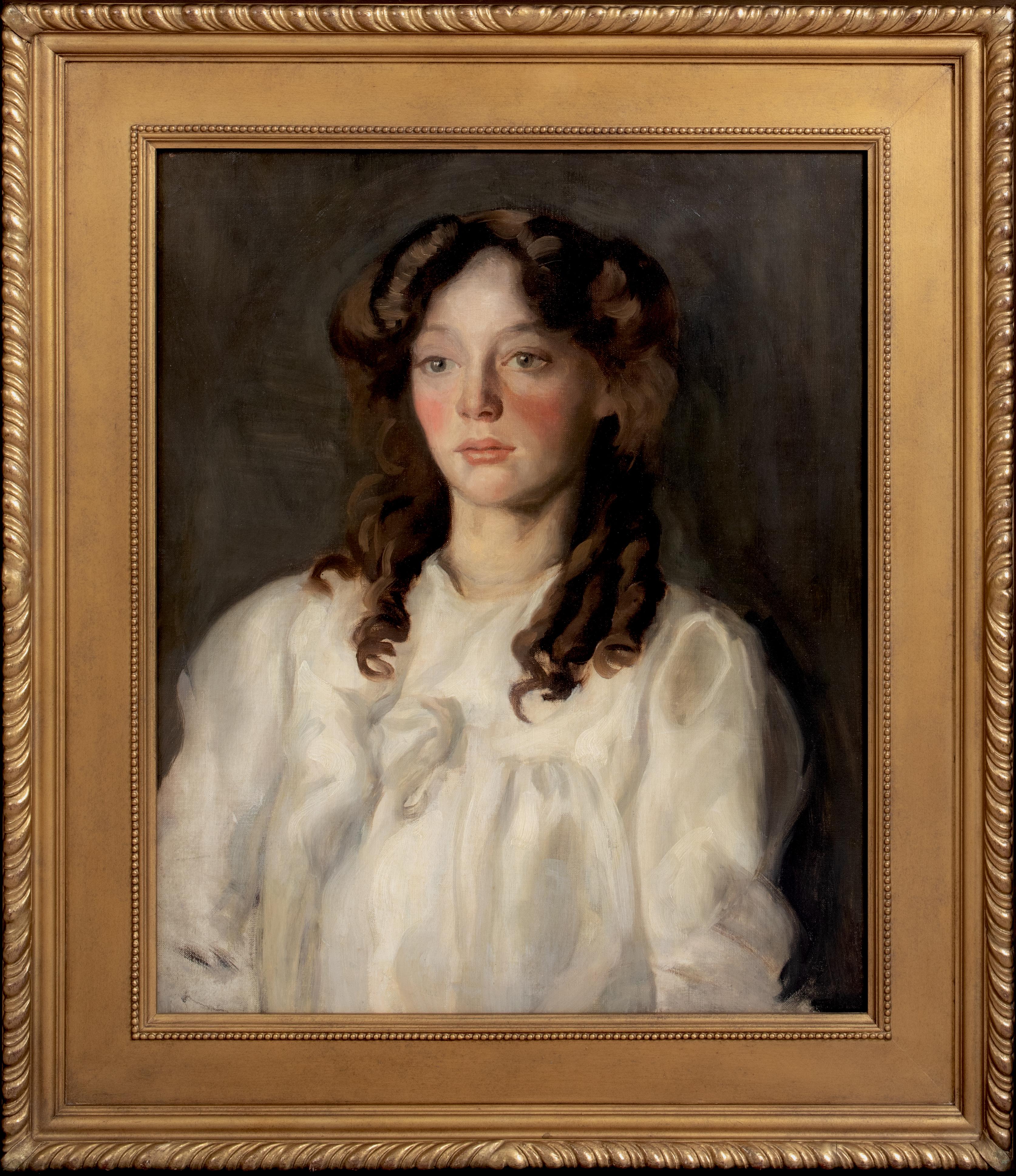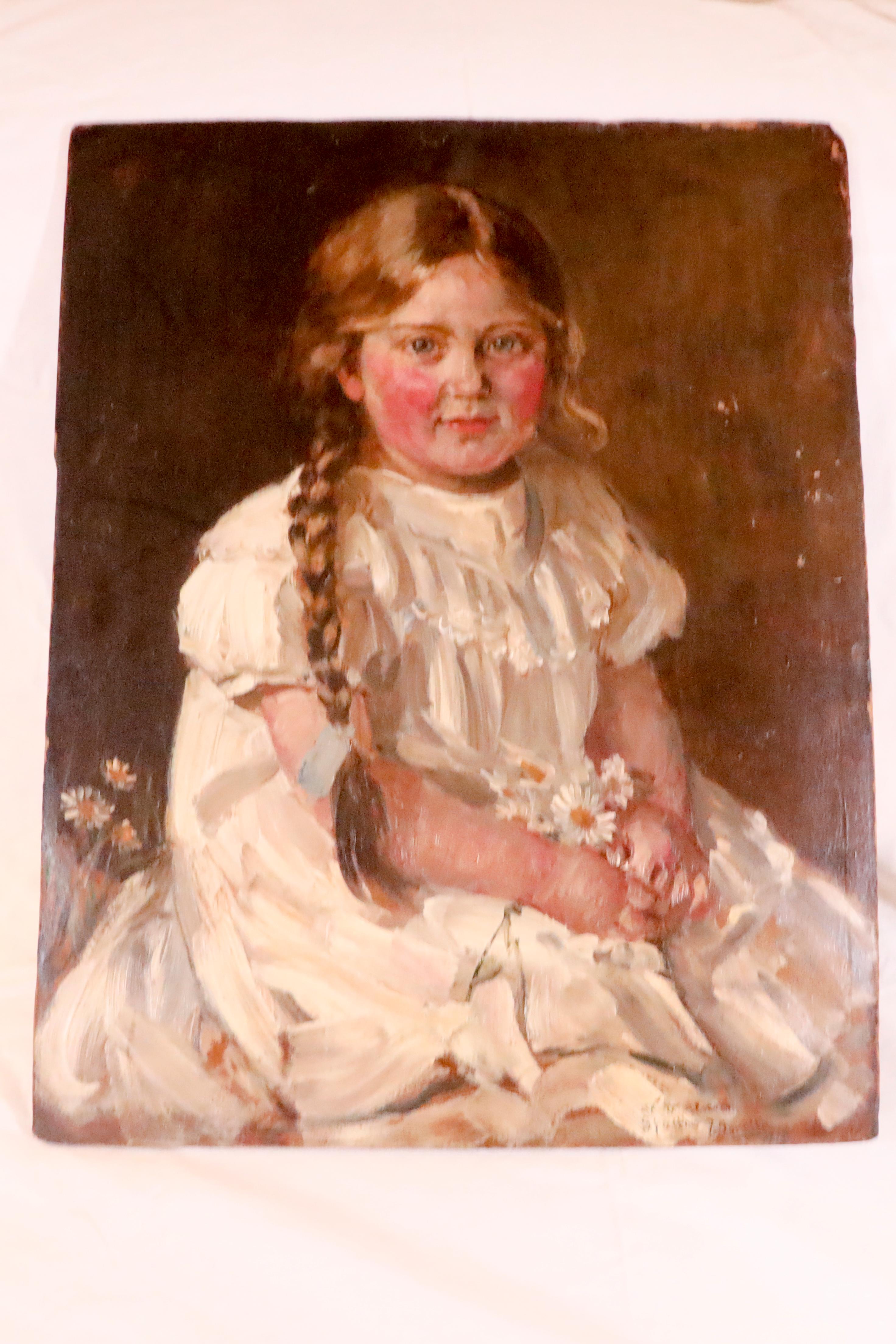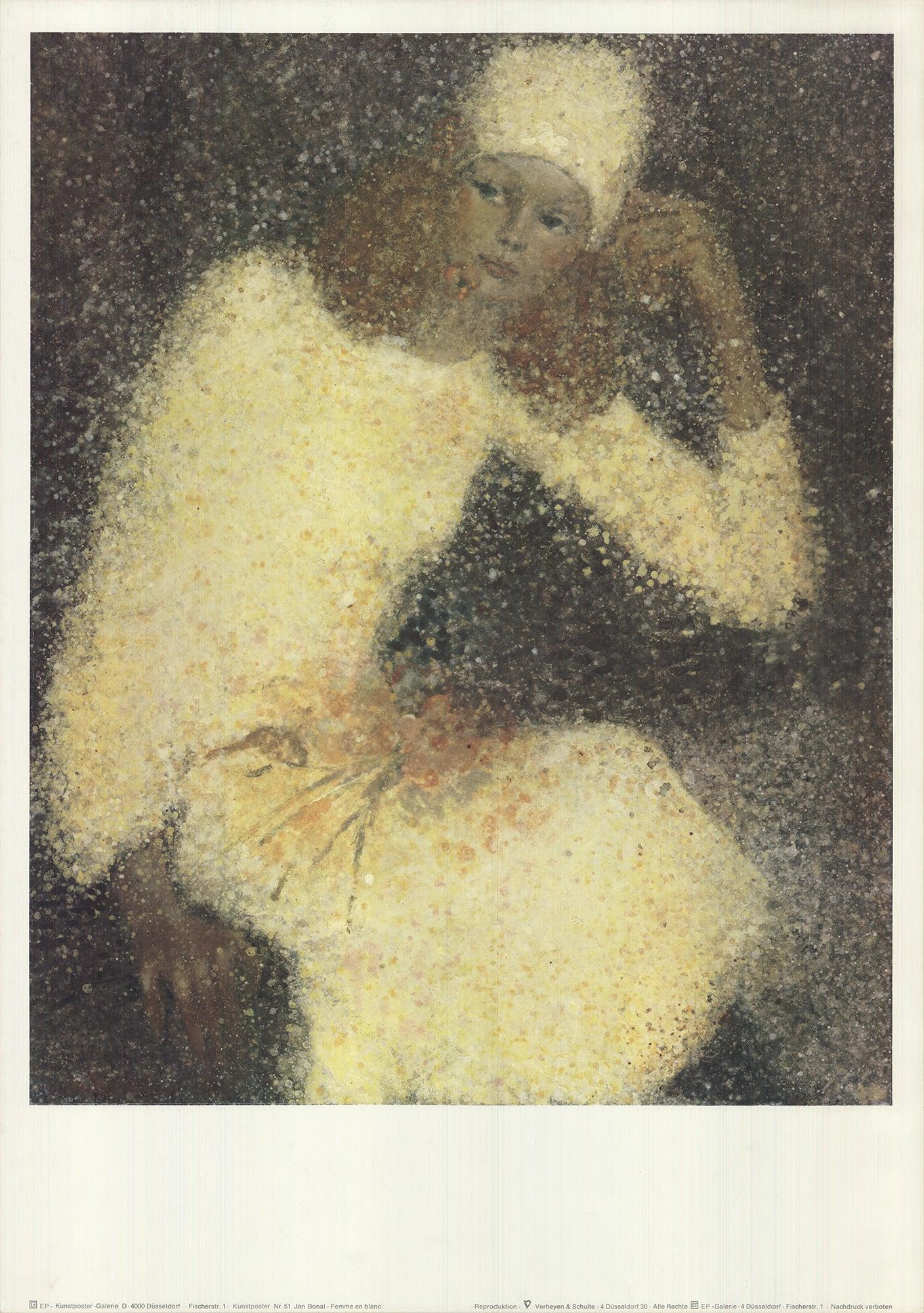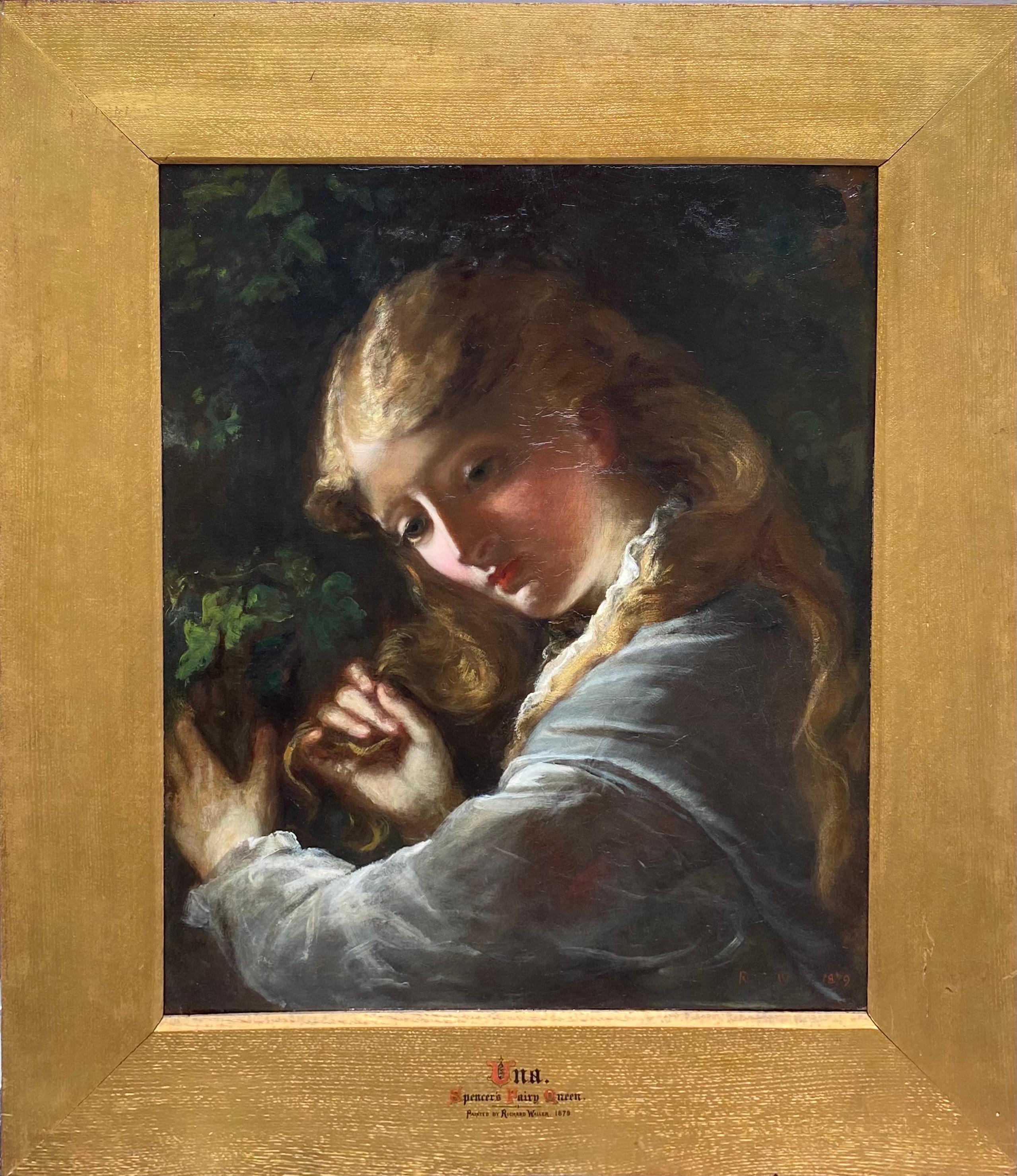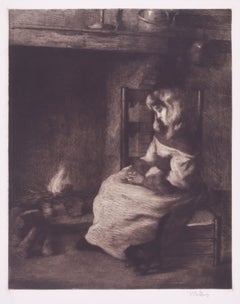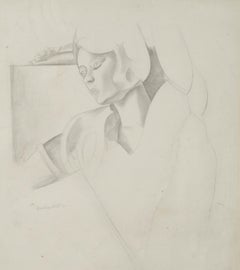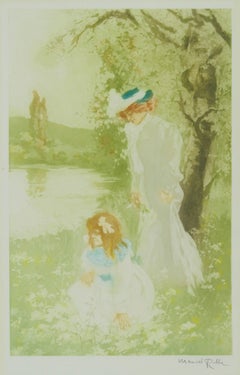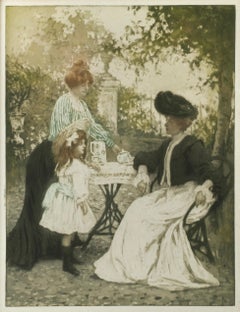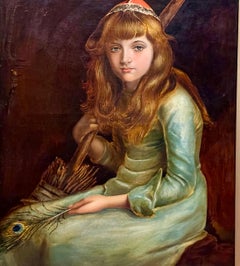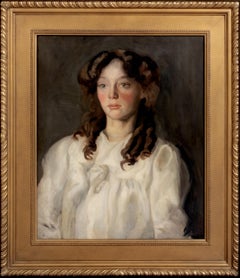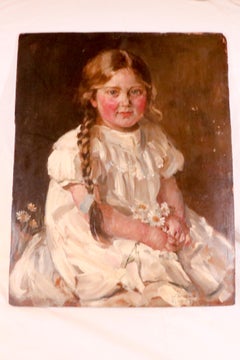Items Similar to Symphony in White No. 2, The Little White Girl
Want more images or videos?
Request additional images or videos from the seller
1 of 12
Symphony in White No. 2, The Little White Girl1922
1922
$1,500
£1,132.01
€1,295.98
CA$2,115.50
A$2,322.55
CHF 1,211.68
MX$28,106.12
NOK 15,186.53
SEK 14,309.71
DKK 9,674.14
About the Item
Clifford James (active 1900-1930)
After James Abbott NcNeill Whistler (1834-1903)
Symphony in White No. 2, The Little White Girl
Color mezzotint, 1922
Signed in pencil by James (see photo)
Published by James Connell and Sons in 1922 (see photo of their stamp)
Edition: 250
The sitter (model) is Joanna Hifferman, Whistler's lover
The Whistler painting is in the collection of The Tate, London.
"Symphony in White, No. 2, also known as The Little White Girl is a painting by James Abbott McNeill Whistler. The work shows a woman in three-quarter figure standing by a fireplace with a mirror over it. She is holding a fan in her hand, and wearing a white dress. The model is Joanna Hiffernan, the artist's mistress. Though the painting was originally called The Little White Girl, Whistler later started calling it Symphony in White, No. 2. By referring to his work in such abstract terms, he intended to emphasize his "art for art's sake" philosophy. In this painting, Heffernan wears a ring on her ring finger, even though the two were not married. By this religious imagery, Whistler emphasizes the aesthetic philosophy behind his work.
Whistler created the painting in the winter of 1864, and it was displayed at the Royal Academy the next year. The original frame carried a poem written by Whistler's friend Algernon Charles Swinburne – titled "Before the Mirror" – written on sheets of golden paper. The poem was inspired by the painting, a form known as ekphrastic poetry, and to Whistler this demonstrated that the visual arts need not be subservient to literature. Though there are few clues to the meaning and symbolism of the painting, critics have found allusions to the work of Ingres, as well as oriental elements typical of the popular Japonisme."
Courtesy Wikipedia
Regarding Clifford James, British Museum states:
"Mezzotint artist - printmaker who created works based on other artists' work - portraits (after Reynolds, Hoppner and others) and other works (after Bellini, de Hooch, Van Dyck, Lawrence, etc.) declared to the PSA and published by J. Connell and Sons (1910-15). Lived in Weston-Super-Mare."
- Creation Year:1922
- Dimensions:Height: 19.25 in (48.9 cm)Width: 12.38 in (31.45 cm)
- Medium:
- Movement & Style:
- After:James Abbott McNeill Whistler (1834-1903, American)
- Period:
- Condition:
- Gallery Location:Fairlawn, OH
- Reference Number:Seller: FA84361stDibs: LU14014458382
About the Seller
5.0
Recognized Seller
These prestigious sellers are industry leaders and represent the highest echelon for item quality and design.
Platinum Seller
Premium sellers with a 4.7+ rating and 24-hour response times
Established in 1978
1stDibs seller since 2013
813 sales on 1stDibs
Typical response time: <1 hour
Associations
International Fine Print Dealers Association
- ShippingRetrieving quote...Shipping from: Fairlawn, OH
- Return Policy
Authenticity Guarantee
In the unlikely event there’s an issue with an item’s authenticity, contact us within 1 year for a full refund. DetailsMoney-Back Guarantee
If your item is not as described, is damaged in transit, or does not arrive, contact us within 7 days for a full refund. Details24-Hour Cancellation
You have a 24-hour grace period in which to reconsider your purchase, with no questions asked.Vetted Professional Sellers
Our world-class sellers must adhere to strict standards for service and quality, maintaining the integrity of our listings.Price-Match Guarantee
If you find that a seller listed the same item for a lower price elsewhere, we’ll match it.Trusted Global Delivery
Our best-in-class carrier network provides specialized shipping options worldwide, including custom delivery.More From This Seller
View AllL'Angellus
By Alfredo Müller
Located in Fairlawn, OH
L'Angellus
Etching, engraving and acquatint on Arches paper, 1902
Signed lower right by the artist (see photo)
This is a first state impression printed in a brown/black ink, one of ...
Category
Early 1900s Art Nouveau Figurative Prints
Materials
Etching
Portrait of Gladys Anne Hoskyns
Located in Fairlawn, OH
Portrait of Gladys Anne Hoskyns
Collotype after a Wyndham Lewis drawing, 1923
Singed in the plate and reinforced in pencil
Published by The Dial Publishing Company in Living Art...
Category
1920s Modern Figurative Prints
Materials
Lithograph
Avril
By Manuel Robbe
Located in Fairlawn, OH
Avril (April)
Color aquatint and etching, c. 1906
Signed in pencil lower right
Edition: c. 100
Excellent impression, fresh colors
Reference: Merrill Chase Volume 1, No. 9
Condition: ...
Category
Early 1900s Impressionist Figurative Prints
Materials
Aquatint
Le Tasse de The (The Cup of Tea)
By Manuel Robbe
Located in Fairlawn, OH
Le Tasse de The (The Cup of Tea)
Color aquatint and etching, c. 1906
Signed in pencil in the image (see photo)
Edition: c. 100
Reference: Merrill Chase, Volume 1, No. 85
Condition: F...
Category
Early 1900s Art Nouveau Figurative Prints
Materials
Aquatint
Merieanna
By Almery Lobel-Riche
Located in Fairlawn, OH
Merieanna
Etching and aquatint, c. 1900
Signed by the artist in pencil lower right
Titled in pencil lower right corner of sheet
Annotated "4" lower left below image
Publisher's dryst...
Category
Early 1900s Impressionist Prints and Multiples
Materials
Aquatint
La Fille au Violon
By Alexandre Charpentier
Located in Fairlawn, OH
La Fille au Violon
Color lithograph, gypsograph with embossed publisher's stamp
Signed and numbered in ink (see photo)
From: L'Estampe Originale, Paris, Vol. VII
Published by Andre M...
Category
1890s Art Nouveau Figurative Prints
Materials
Lithograph
You May Also Like
Cinderella portrait after 1881 painting collected by Andrew Lloyd Webber, 19thC
Located in Hillsborough, NC
Romantic, Pre-Raphaelite painting titled 'Cinderella', this oil on canvas painting is in the Victorian period after a painting by Sir John Everett Millais noted to be in the collecti...
Category
Late 19th Century Pre-Raphaelite Figurative Paintings
Materials
Canvas, Oil
Portrait Of A Girl In White, circa 1900 Portrait Of A Girl In White Hugh RAMSAY
Located in Blackwater, GB
Portrait Of A Girl In White, circa 1900
Portrait Of A Girl In White Hugh RAMSAY (1877-1906)
Large circa 1900 edwardian portrait of a girl in white, oil...
Category
19th Century Portrait Paintings
Materials
Canvas, Oil
Portrait of a Young Girl in a White Dress - British Edwardian art oil painting
By Robert Edward Morrison
Located in Hagley, England
This lovely British Edwardian portrait oil painting is by noted Liverpool artist Robert Edward Morrison. Born on the Isle of Man, Morrison moved to Liv...
Category
Early 1900s Pre-Raphaelite Portrait Paintings
Materials
Oil
A Portrait of a Little Girl in a White Dress In the manner of Sorolla
Located in Brookville, NY
While the painting may be signed on the lower right side "Sorolla" it is not by the famed artist Joaquín Sorolla y Bastida. It is most likel...
Category
1910s Post-Impressionist Portrait Paintings
Materials
Oil
Woman in White
Located in Brooklyn, NY
"Woman in White" by Jan Bonal is an original poster published by Galerie D in Düsseldorf, Germany, in 1990. Measuring 33.25 x 23.5 inches (84 x 60 cm), this elegant composition refle...
Category
1990s Contemporary Portrait Prints
Materials
Offset
Una
Located in London, GB
Richard Waller
1811 - 1882
Una
Oil on canvas, signed lower right and dated 1879
Image size: 23 1/2 x 19 1/2 inches (59.5 x 49.5 cm)
Original frame
Una is one of the main characters in the first book of Edmund Spenser...
Category
19th Century Victorian Portrait Paintings
Materials
Canvas, Oil
$7,444
More Ways To Browse
Antique Hand Fans
Antique Mirror Sheets
Wolfgang Hutter
Woman In The Waves
Wynn Chamberlain
12 Tribes Of Israel
1930s Wpa Prints
1960s Womens Fashion
Alaska Watercolor
Albrecht Durer Woodcut Print
Alex Katz Dancer 2
Alice Neel Lithograph
Anders Zorn Etchings
Andy Warhol Dollar Sign
Andy Warhol Electric Chair Art
Antique Lawyer Prints
Arnold Friberg
Atoms For Peace
